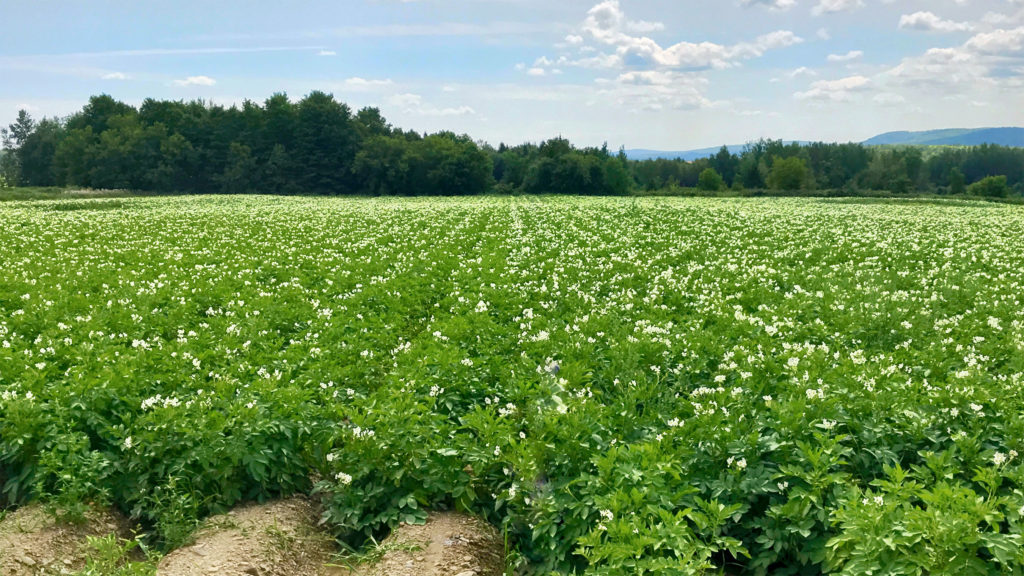
Sustainability and profitability: two sides of one well-managed coin
(Sponsored) Sustainability is one of the biggest priorities in agriculture today. Recognizing that responsible management of resources is critical to ensuring agriculture can meet the world’s food, feed, and fiber needs today and tomorrow too, most farmers are supportive of improving sustainability. Where it gets tricky, however, is in the ‘how’:
How can a potato producer best achieve meaningful steps towards sustainability? And how can they build sustainability while remaining profitable too?
In fact, sustainability and profitability are two sides of one coin: both are outcomes of a high-functioning, well-managed production system. That’s because the single fastest and most effective way to improve both sustainability and profitability is to focus on increasing productivity. Afterall, the more productive an acre of land, the smaller the environmental footprint of each unit it produces: the less inputs, emissions and land required per pound of product.
Step one to increasing production is effective management of soil-borne pests and disease.
“Suppressing soil-borne disease is the driver and the cornerstone that allows for sustainable production systems,” says Chad Hutchinson, global director of potato research and market support for TriCal Group. “While I applaud and encourage all kinds of sustainability improvements, growers will struggle to quickly make meaningful impact without first achieving effective soil-borne disease management.”
Managing soil-borne pests and disease allows potato plants to develop healthy root systems that function to their full capacity. Roots that can effectively source the macro- and micronutrient building blocks for optimal growth are able to produce a larger tuber set, ultimately improving both returns and production sustainability.
Enter chloropicrin (the active ingredient in Strike) and TELONE™.
Chloropicrin is a selective soil fumigant that effectively manages a wide variety of soil-borne diseases including early die complex, rhizoctonia, black dot, common scab, and some nematodes. TELONE™ is a selective nematicidal soil fumigant that manages key pests including root-knot, lesion, stubby-root, dagger, ring and cyst nematodes. Both products boost tired, overworked, diseased soils, delivering more yield, more profit and, ultimately, more sustainability.
Chloropicrin manages most potato producers’ biggest soil-borne headache: potato early die complex, which can build to damaging levels within three to four rotations and survive in soil for 10-15 years. Early die is caused primarily by Verticillium dahlia and lesion nematode. Typical control methods including seed and soil treatments, crop rotation, and biocontrol have little impact on the disease and plant breeders have had limited success in developing genetic resistance. Fumigating with metam sodium, a less selective product, is losing favor in some areas.
Luckily, trials show chloropicrin has real promise for managing key pathogen contributors to potato early die complex including verticillium.
“When applied at a high enough rate to effectively treat an adequate volume of soil, chloropicrin produces impressive results against verticillium,” says Hutchinson. “This is a really important step forward for the industry, since farmers have until now had such limited options for suppression.”
While research into chloropicrin’s impact on fusarium and rhizoctonia in potato crops is limited to date, research in other crop types consistently shows chloropicrin’s high efficacy against these two diseases as well.
“We see good results in-field – such as much less disease symptoms like damping off – but until we have more research, we can only infer its efficacy based on what we see and how it performs in other crops,” says Hutchinson.
Depending on its source, rhizoctonia causes slightly different issues within the plant. Rhizoctonia that comes in on the seed piece will primarily run up the stem. Rhizoctonia in the soil typically infects daughter tubers, ultimately providing the pathway to disease spread into new fields.
“While fumigation is effective at suppressing rhizoctonia that’s already in a field, it doesn’t offer residual control so it won’t control disease that enters the field post-application. Therefore, while it provides background suppression for the existing pathogen, it remains necessary to apply seed treatment to achieve early-season suppression of the disease,” says Hutchinson.
Chloropicrin has also proved effective in countering black dot (Colletotrichum coccodes) and common scab (Streptomyces scabies).
What does effective soil-borne disease management ultimately mean for sustainability? More tons of potatoes per acre, which means a farmer can farm fewer total acres to meet their contract. Farming fewer acres means lower inputs and emissions per pound produced. Increased efficiency means better economic and environmental sustainability: a win for all!
Strike is a Federally Restricted Use Pesticide. TELONE™ is a Trademark of the Dow Chemical Company (”Dow”) or an affiliated company of Dow, used under license. TELONE™ is a federally Restricted Use Pesticide. Always read and follow label directions.

To learn more about Strike Fumigants, visit https://strikefumigants.com/







